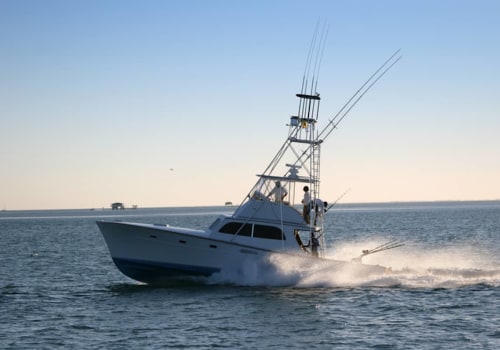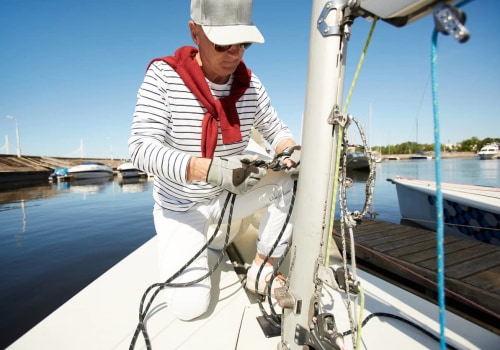Are you in the market for a new yacht? If so, one important step in the buying process is conducting a sea trial. This essential procedure allows potential buyers to test the performance and capabilities of a yacht before making a purchase. It's a crucial step in ensuring that you are getting the best vessel for your needs and budget. In this article, we will explore everything you need to know about conducting a sea trial before buying a yacht. We will cover the purpose of a sea trial, what to expect during the process, and why it is important for making an informed decision.
So, if you're ready to dive into the world of sea trials, let's get started!When purchasing a yacht, one of the most important steps in the inspection and surveying process is conducting a sea trial. This involves taking the yacht out on the water to test its performance and functionality. A sea trial allows you to get a true feel for the yacht's handling, speed, and overall performance, as well as test out all the onboard systems. Before scheduling the sea trial, it is important to make sure that the weather conditions are suitable for accurate testing. It is best to choose a calm day with good weather to ensure that the yacht can be properly evaluated. During the sea trial, it is important to pay attention to how the yacht responds to different speeds and maneuvers.
This will give you an idea of how the yacht will perform in different conditions. In addition, be sure to test out all the onboard systems, such as navigation, steering, and electrical systems, to ensure they are functioning properly. As you are testing the yacht's performance and systems, be on the lookout for any unusual noises or vibrations. These could be indicators of potential issues that require further inspection. Make note of any observations or concerns that arise during the sea trial so that you can discuss them with your surveyor or broker. In conclusion, conducting a sea trial is an essential step in the process of buying a yacht.
It allows you to thoroughly evaluate the yacht's performance and systems before finalizing the deal. By following these tips and paying close attention during the sea trial, you can make an informed decision when purchasing a yacht that meets your needs and expectations.
Testing the Yacht's Performance
Once on the water, start by testing the yacht's performance at different speeds. This will give you an idea of its handling and maneuverability. Next, test the steering by making sharp turns and observing how the yacht responds. Check the responsiveness of the throttle and make sure it is smooth and easy to control.Also, test out the yacht's braking capabilities by coming to a complete stop from different speeds.
Inspecting Onboard Systems
During the sea trial, it is crucial to thoroughly inspect all onboard systems to ensure the yacht is in good condition. This includes testing the navigation, electrical, and plumbing systems. Take the time to check that all instruments are functioning properly and there are no leaks or malfunctions. It is also important to test the generator and air conditioning systems, if applicable.This is a good opportunity to look for any signs of wear and tear, as well as potential safety hazards that may need to be addressed before finalizing the purchase. Remember, a thorough inspection of all onboard systems can save you from future headaches and expenses.
Preparing for the Sea Trial
Before heading out on the water, there are a few things you should do to prepare for the sea trial. First, make sure you have all necessary safety equipment on board. This includes life jackets, flares, fire extinguishers, and a first aid kit. Next, review the manufacturer's manual to familiarize yourself with the yacht's systems and controls.This will help you better understand how the yacht should perform during the sea trial. Finally, create a checklist of all the things you want to test during the sea trial. This will ensure that you cover all important aspects of the yacht's performance and functionality.
Testing the Yacht's Performance
When conducting a sea trial for a yacht, one of the most crucial aspects is testing the yacht's performance. This involves evaluating how the yacht handles and maneuvers at different speeds, as well as its responsiveness to steering and throttle control. It is important to thoroughly test these aspects to ensure the yacht meets your expectations before finalizing the purchase. Start by testing the yacht's performance at various speeds.This will give you a good idea of how the yacht handles and moves in the water. Take note of any unusual noises or vibrations, as this could be an indication of potential issues. Next, test the steering by making sharp turns and observing how the yacht responds. The steering should be smooth and easy to control, without any delays or hesitation. If you notice any issues with the steering, it could be a red flag for potential problems with the yacht's overall performance. Check the responsiveness of the throttle by accelerating and decelerating at different speeds.
The throttle should be easy to control and should respond quickly to your commands. If you experience any delays or difficulties in controlling the throttle, it could be a sign of underlying issues that need to be addressed. Finally, test out the yacht's braking capabilities by coming to a complete stop from different speeds. The braking system should be effective and should bring the yacht to a stop smoothly. Any issues with braking could indicate a need for maintenance or repairs. In conclusion, testing the yacht's performance during a sea trial is essential in making an informed decision when purchasing a yacht.
By thoroughly evaluating its handling, steering, throttle, and braking, you can ensure that you are getting a high-quality vessel that meets your needs and expectations.
Testing the Yacht's Performance
Once on the water, start by testing the yacht's performance at different speeds. This will give you an idea of its handling and maneuverability. Next, test the steering by making sharp turns and observing how the yacht responds. Also, test out the yacht's braking capabilities by coming to a complete stop from different speeds.Conducting a sea trial
is an essential step in the yacht buying process.It allows you to thoroughly inspect the vessel and ensure it meets your expectations and requirements. Make sure to take your time during the sea trial and test everything thoroughly. If you have any concerns or questions, don't hesitate to ask the seller for clarification.










